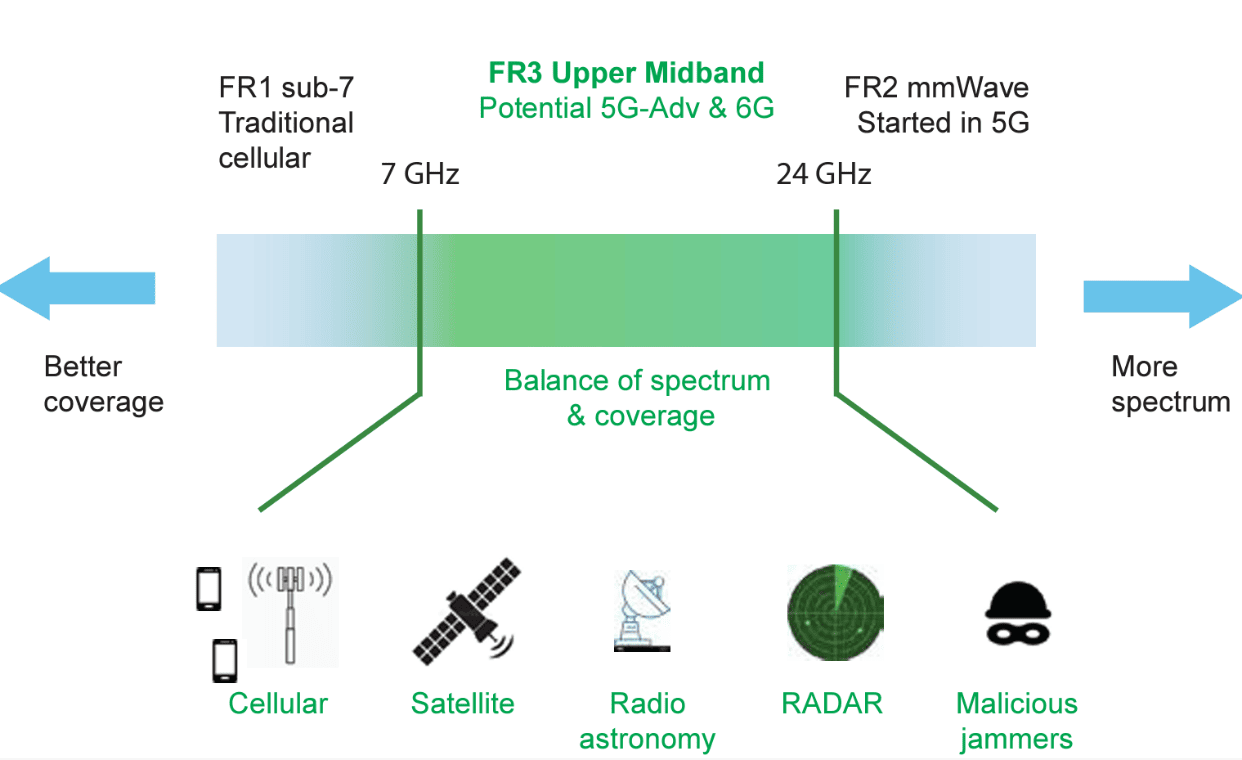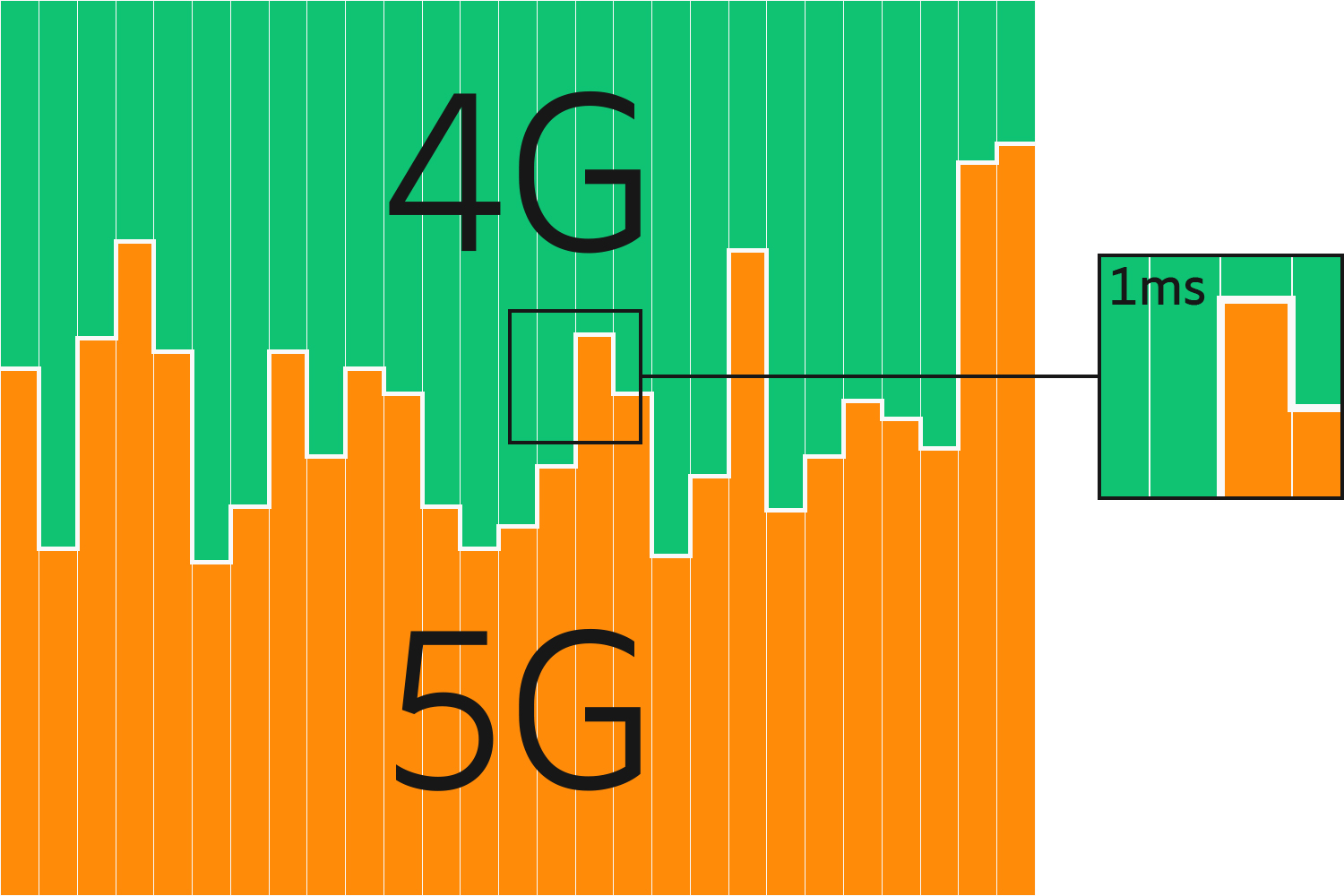Recently, I have read an interesting white paper from Anritsu, which covered trends in wireless frequency band allocation for 5G-A and 6G. The most recent WRC was held in Dubai, […]


If you’re a Telecom Engineer and Hungry, this article is for you 🙂 During my discussion with my non-telecom friend, he was asking about the Telecom tower’s radiation and how […]

5G defines the use of wide radio channels. Whereas 4G is limited to a maximum radio channel size of 20 MHz, 5G standards specify the use of radio channels up […]

All notes you should know about 5G mmWave Band. ? 5G mmWave refers to the higher range of radio frequencies (above about 24 GHz) supported by 5G. Also, it’s called […]

Not all radio spectrums are equal. Sub 1GHz offers the best coverage profile; however, the amount of low band spectrum available is limited. Frequency range two (FR2), i.e. greater than […]

As we discussed in the last article, let’s Recap again What is DSS and why we need to use the DSS feature in 5G Roadmap deployment. Due to the occupation […]

Before start talking about DSS or Dynamic Spectrum Sharing, let’s address the problem first and how DSS can solve it. As we know that 5G can support newly released frequency […]

The Gulf Countries (UAE, Saudi Arabia, Qatar, Kuwait, Bahrain, and Oman) are the front runner in the 5G Race. They started to think of 5G as early as Mid-2019. Use […]

The ITU-R IMT-2020 (5G) Vision includes three usage scenarios: eMBB, mMTC, and uRLLC. It also specifies the key capabilities of IMT-2020 which represent great improvements in comparison with the previous […]

To understand how 5G achieves the higher data rates, we need to dig into Shannon’s Law to see how engineers have tackled each of the limiting factors from previous generations. […]

DSS: Dynamic Spectrum Sharing DSS technology has been introduced by the industry to enable 5G services to be delivered in LTE networks to accelerate the availability of 5G services. Traditionally […]
